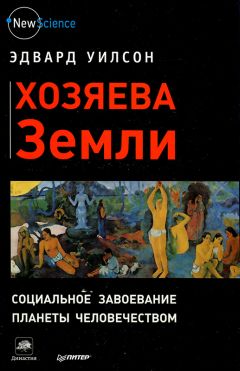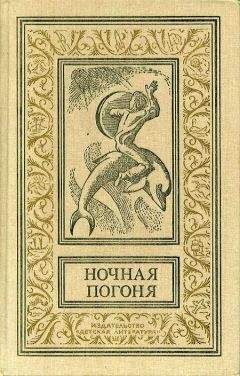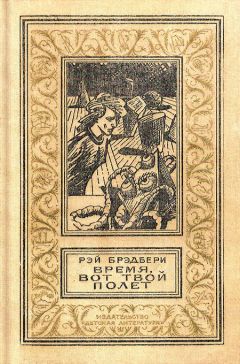Изменения климата и ранние этапы эволюции гоминид. Elisabeth S. Vrba et al., eds., Paleoclimate and Evolution, with Emphasis on Human Origins (New Haven: Yale University Press, 1995).
Копательные орудия у шимпанзе. R. Adriana Hernandez-Aguilar, Jim Moore, and Travis Rayne Pickering, «Savanna chimpanzees use tools to harvest the underground storage organs of plants» Proceedings of the National Academy of Sciences, U.S.A. 104(49): 19210-19213 (2007).
Интеллекту крупных птиц. Daniel Sol et al., «Big brains, enhanced cognition, and response of birds to novel environments» Proceedings of the National Academy of Sciences, U.S.A. 102(15): 5460–5465 (2005).
Размер мозга и общественная организация у хищников. John A. Finarelli and John J. Flynn, «Brain-size evolution and sociality in Carnivora» Proceedings of the National Academy of Sciences, U.S.A. 106(23): 9345–9349 (2009).
Древние орудия труда. J. Shreeve, «Evolutionary road» National Geographic 218:34–67 (July 2010).
Эволюционный переход к питанию мясом. David R. Braun et al., «Early hominin diet included diverse terrestrial and aquatic animals 1.95 Ma in East Turkana, Kenya» Proceedings of the National Academy of Sciences, U.S.A. 107(22): 10002-10007 (2010); Teresa E. Steele, «A unique hominin menu dated to 1.95 million years ago» Proceedings of the National Academy of Sciences, U.S.A. 107(24): 10771-10772 (2010).
Хищничество у бонобо. Martin Surbeck and Gottfried Hohmann, «Primate hunting by bonobos at LuiKotale, Salonga National Park» Current Biology 18(19): R906-R907 (2008).
Неандертальцы — охотники на крупную дичь. Michael P. Richards and Erik Trinkaus, «Isotopic evidence for the diets of European Neanderthals and early modern humans» Proceedings of the National Academy of Sciences, U.S.A. 106(38): 16034-16039 (2009). Неандертальцы питались также и разнообразной растительной пищей, когда она была доступна: Amanda G. Henry, Alison S. Brooks, and Dolores R. Piperno, «Microfossils in calculus demonstrate consumption of plants and cooked foods in Neanderthal diets (Shanidar III, Iraq; Spy I and II, Belgium)» Proceedings of the National Academy of Sciences, U.S.A. 108(2): 486–491 (2011).
6. Творческие силы
Родственный отбор в эволюции человека. В 1970-х гг. я был среди тех ученых, которые отводили родственному отбору центральное место в возникновении эусоциальности и человеческой эволюции в целом, что отражено в моих книгах: Sociobiology: The New Synthesis (Cambridge, MA: Belknap Press of Harvard University Press, 1975) и On Human Nature (Cambridge, MA: Harvard University Press, 1978). Теперь я полагаю, что, считая роль родственного отбора столь значительной, я был неправ. См.: Edward O. Wilson, «One giant leap: How insects achieved altruism and colonial life» BioScience 5B(1): 17–25 (2008); Martin A. Nowak, Corina E. Tarnita, and Edward O. Wilson, «The evolution of eusociality» Nature 466:1057–1062 (2010).
Новая теория общественной эволюции, в том числе отбор от матки к матке у общественных насекомых. Martin A. Nowak, Corina E. Tarnita, and Edward O. Wilson, «The evolution of eusociality» Nature 466:1057–1062 (2010).
7. Человеку нужно племя
Ликование после спортивной победы. Roger Brown, Social Psychology (New York: Free Press. 1965; 2nd ed. 1985), p. 553.
Образование консолидированных групп как инстинкт. Roger Brown, Social Psychology (New York: Free Press, 1965; 2nd ed. 1985), p. 553; Edward O. Wilson, Consilience: The Unity of Knowledge (New York: Knopf, 199B).
Предпочтение родного языка при образовании групп. Katherine D. Kinzler, Emmanuel Dupoux, and Elizabeth S. Spelke, «The native language of social cognition» Proceedings of the National Academy of Sciences, U.S.A. 104(30): 12577-12580 (2007).
Активация мозга и контроль над страхом. Jeffrey Kluger, «Race and the brain» Time, p. 59 (20 October 2008).
8. Война — наследственное проклятье человечества
Уильям Джемс о войне. William James, «The moral equivalent of war» Popular Science Monthly 77:400–410 (1910).
Война и геноцид в СССР и нацистской Германии. Timothy Snyder, «Holocaust: The ignored reality» New York Review of Books 56(12) (16 July 2009).
Мартин Лютер о божественном установлении войны. Martin Luther, Whether Soldiers, Too, Can Be Saved (1526), trans. J. M. Porter, Luther: Selected Political Writings (Lanham, MD: University Press of America, 1988), p. 103. Русский перевод: Мартин Лютер. «Могут ли воины обрести Царство Небесное».
Завоевание Мелоса афинянами. William James, «The moral equivalent of war» Popular Science Monthly 77: 400–410 (1910); Thucydides, The Peloponnesian War, trans. Walter Banco (New York: W. W. Norton, 1998). Русский перевод: Фукидид. «История». Издательство «Наука». Ленинград, 1981.
Свидетельства о доисторических войнах. Steven A. LeBlanc and Katherine E. Register, Constant Battles: The Myth of the Peaceful, Noble Savage (New York: St. Martin’s Press, 2003).
Буддизм и война. Bernard Faure, «Buddhism and violence» International Review of Culture & Society no. 9 (Spring 2002); Michael Zimmermann, ed., Buddhism and Violence (Bhairahana, Nepal: Lumbini International Research Institute, 2006).
Общечеловеческий и вневременной характер войны. Steven A. LeBlanc and Katherine E. Register, Constant Battles: The Myth of the Peaceful, Noble Savage (New York: St. Martin’s Press, 2003).
Первые модели группового отбора. Richard Levins, «The theory of fitness in a heterogeneous environment, IV: The adaptive significance of gene flow» Evolution 18(4): 635–638 (1965); Richard Levins, Evolution in Changing Environments: Some Theoretical Explorations (Princeton, NJ: Princeton University Press, 1968); Scott A. Boorman and Paul R. Levitt, «Group selection on the boundary of a stable population» Theoretical Population Biology 4(1): 85–128 (1973); Scott A. Boorman and P. R. Levitt, «A frequency-dependent natural selection model for the evolution of social cooperation networks» Proceedings of the National Academy of Sciences, U.S.A. 70(1): 187–189 (1973). Критический обзор этих статей содержится в книге: Edward O. Wilson, Sociobiology: The New Synthesis (Cambridge, MA: Belknap Press of Harvard University Press, 1975), pp. 110–117.
Насилие и смерть у людей и шимпанзе. Richard W. Wrangham, Michael L. Wilson, and Martin N. Muller, «Comparative rates of violence in chimpanzees and humans» Primates 47:14–26 (2006).
Сравнение агрессии у людей и шимпанзе. Richard W. Wrangham and Michael L. Wilson, «Collective violence: Comparison between youths and chimpanzees» Annals of the New York Academy of Science 1036: 233–256 (2004).
Войны шимпанзе. John C. Mitani, David P. Watts, and Sylvia J. Amsler, «Lethal intergroup aggression leads to territorial expansion in wild chimpanzees» Current Biology 20(12): R507-R508 (2010). Отличное описание и комментарий приведены в статье: Nicholas Wade. «Chimps that wage war and annex rival territory» New York Times, D4 (22 June 2010).
Популяционный контроль. Правило минимального ограничивающего фактора было предложено Карлом Шпренгелем в 1828 г. применительно к сельскому хозяйству. Позже Юстус фон Либих сформулировал его в общем виде, и теперь это правило иногда называют законом ограничивающего фактора или «бочкой Либиха». В оригинальной формулировке говорится, что рост сельскохозяйственной культуры ограничивается не общим количеством минеральных элементов в почве, а количеством самого скудного элемента.
Демографические «удары» и образование союзов. E. A. Hammel, «Demographics and kinship in anthropological populations» Proceedings of the National Academy of Sciences, U.S.A. 102(6): 2248–2253 (2005).
Региональные ограничения размера человеческой популяции. R. Hopfenberg, «Human carrying capacity is determined by food availability» Population and Environment 25:109–117 (2003). 77–84.
9. Прощание с Африкой
Ископаемые следы Homo erectus. Сообщение в сборнике: «World Roundup: Archaeological assemblages: Kenya» Archaeology, p. 11 (May/June 2009).
Появление современного Homo sapiens. G. Philip Rightmire, «Middle and later Pleistocene hominins in Africa and Southwest Asia», Proceedings of the National Academy of Sciences, U.S.A. 106(38): 16046-16050 (2009).
Геномы жителей Африки. Stephan C. Schuster et al., «Complete Khoisan and Bantu genomes from southern Africa» Nature 463: 943–947 (2010).
10. Культурный взрыв
Серийный эффект основателя при расселении человека. Sohini Ramachandran et al., «Support from the relationship of genetic and geographic distance in human populations for a serial founder effect originating in Africa» Proceedings of the National Academy of Sciences, U.S.A. 102(44): 15942-15947 (2005).
Генетический разброс при расселении вверх по Нилу. Henry Harpending and Alan Rogers, «Genetic perspectives on human origins and differentiation» Annual Review of Genomics and Human Genetics 1: 361–385 (2000).
Изменения климата и расселение из Африки. Andrew S. Cohen et al., «Ecological consequences of early Late Pleistocene megadroughts in tropical Africa» Proceedings of the National Academy of Sciences, U.S.A. 104(42): 16428-16427 (2007).
Homo sapiens приходят в Европу, а неандертальцы исчезают. John F. Hoffecker, «The spread of modern humans in Europe» Proceedings of the National Academy of Sciences, U.S.A. 106(38): 16040-16045 (2009); J. J. Hublin, «The origin of Neandertals» Proceedings of the Notional Academy of Sciences, U.S.A. 106(38): 16022-16027 (2009).
Открытие нового вида гоминид, «Денисовского человека». David Reich et al., «Genetic history of an archaic hominin group from Denisova Cave in Siberia» Nature 468:1053–1060 (2010).
Расселение Homo sapiens по Старому Свету. Peter Foster and S. Matsumura, «Did early humans go north or south?» Science 308: 965–966 (2005); Cristopher N. Johnson, «The remaking of Australia’s ecology» Science 309:255–256; Gifford H. Miller et al.. «Ecosystem collapse in Pleistocene Australia and a human role in megafaunal extinction» Science 309: 287–290 (2005).
Вторжение человека в Новый Свет. Ted Goebel, Michael R. Waters, and Dennis H. O’Rourke, «The Late Pleistocene dispersal of modern humans in the Americas» Science 319:1497–1502 (2008); Andrew Curry, «Ancient excrement» Archaeology, pp. 42–45 (July/August 2008).
Перерывы в появлении культурных новшеств. Francesco d’Errico et al., «Additional evidence on the use of personal ornaments in the Middle Paleolithic of North Africa» Proceedings of the National Academy of Sciences, U.S.A. 106(38): 16051-16056 (2009).
Скорость эволюции увеличивается по мере расселения человека. John Hawks et al., «Recent acceleration of human adaptive evolution» Proceedings of the National Academy of Sciences, U.S.A. 104(52): 20753-20758 (2007).
Адаптивная эволюция в недавней эволюционной истории человека. Jun Gojobori et al., «Adaptive evolution in humans revealed by the negative correlation between the polymorphism and fixation phases of evolution» Proceedings of the National Academy of Sciences, U.S.A. 104(10): 3907–3912 (2007).





